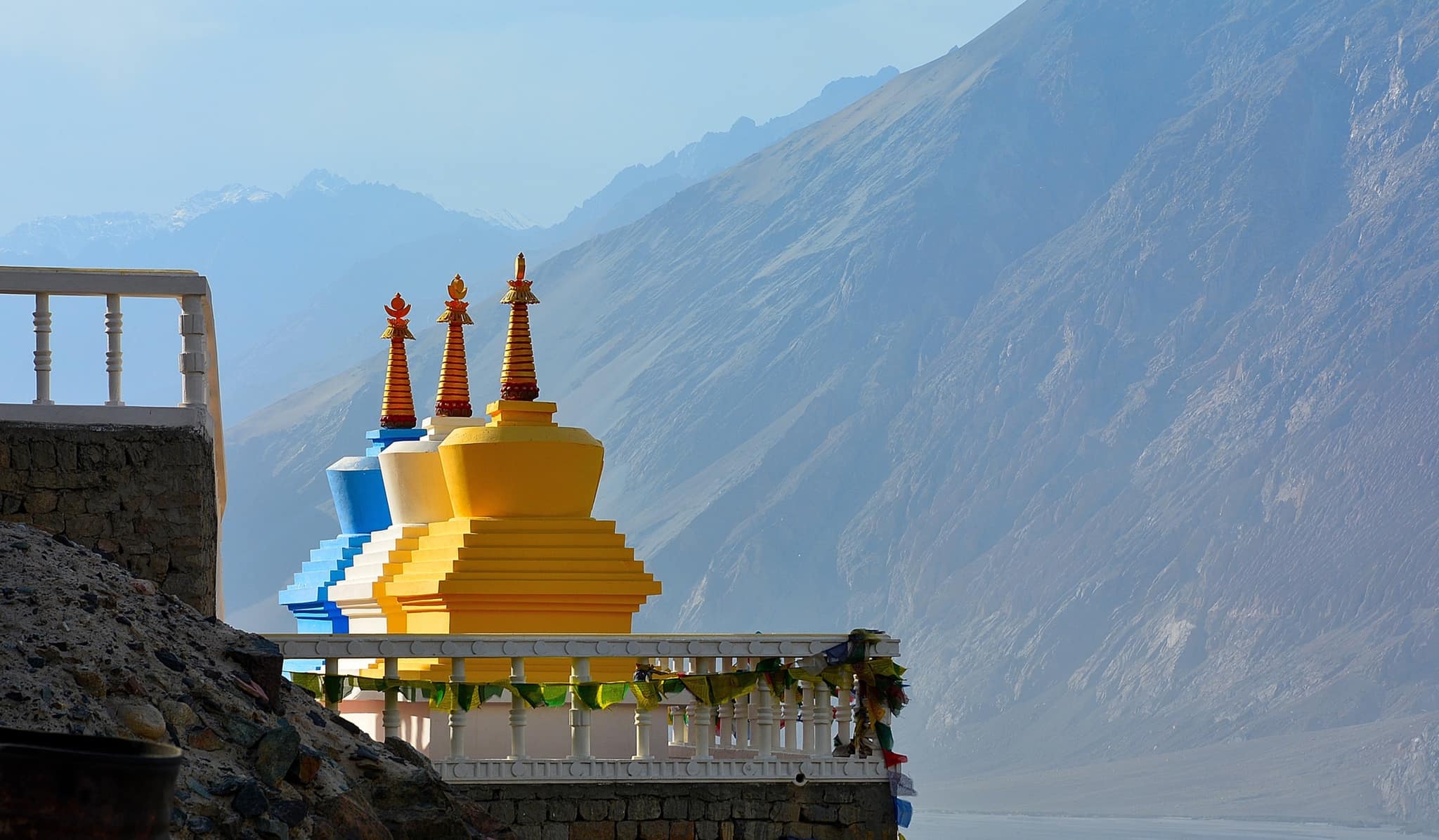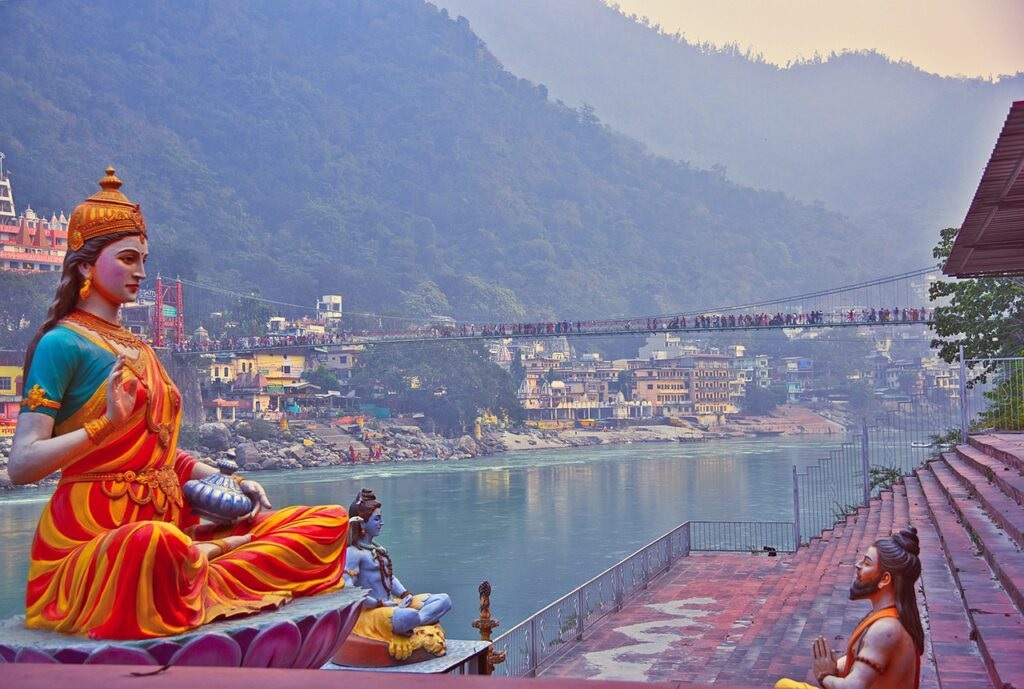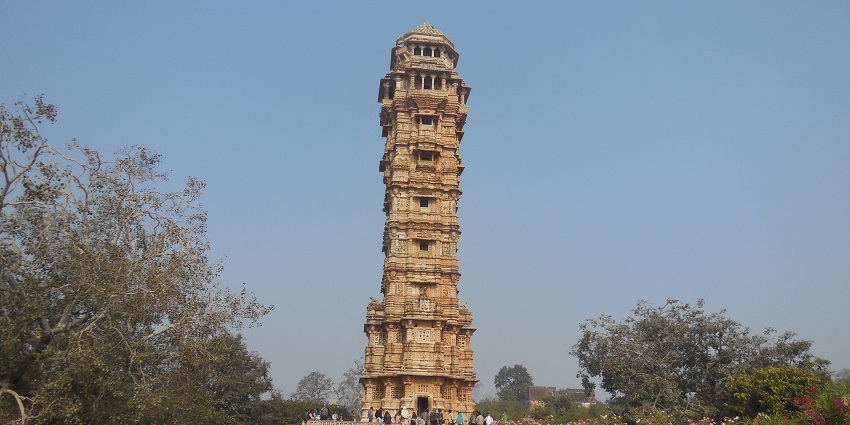Best Time to Visit India Traditional and Cultural Tours attract millions of visitors annually for almost endless opportunities. Plains, mountains, beaches, rivers, and bustling cities have something for everyone. Experience India from stunning landscapes to gigantic cultural festivals.

WORST TIME TO VISIT INDIA
The months between May and September happen to be the worst times for Indian weather. India is huge at 1.27 million square miles, about a third the size of the United States. Weather conditions will vary depending on the specific region you visit.
Temperatures in May reach 113℉ in northern areas like Delhi. The summer months also mark the monsoon season. Eastern cities like Kolkata will experience heavy rainfall for up to 16 days in a month.
However, different areas can have drastically different climates. In our monthly breakdown, we’ll explore which times will work best for you.
CHEAPEST MONTH TO VISIT INDIA
The best time to visit India traditional and Cultural tours in June to September is generally the cheapest time to visit India. The days are usually hot, humid, and rainy with intense thunderstorms. In Delhi, the daily rain chances remain around 70%.

Due to the bad weather, the influx of tourists will be the lowest of the year. Therefore, travel, accommodation and attraction rates are up to 40% lower in the summer months.
July is when you have the best chance to find deals on hotels and airfare. Multi-day travel packages have great discounts. Hotel and other accommodation rates can drop up to 60% from peak season, depending on area and local events.
BEST TIME TO VISIT INDIA Traditional and Cultural Tours : MONTH BY MONTH
JANUARY: THE BEST FOR SKIING IN AULI
The average maximum in North India is 20°C and the average minimum is 8°C. Eastern India has an average high of 25°C and an average low of 13°C. South India has an average high of 28°C
and an average low of 16°C. Western India has an average high of 30°C and an average low of 16°C.
Skiing in Auli, Uttarakhand is always popular in January. The higher elevations (9,544 feet) generate plenty of snow and excellent skiing conditions. Accommodation costs are very reasonable compared to ski resorts in other countries.
If skiing doesn’t catch your attention, the city of Jaipur, Rajasthan, has a lot to offer. The markets and shops are full of locally made products and foods. The Jaipur Literature Festival also makes this the busiest time for tourism, so make reservations at least three months in advance.
Every modern city in India organizes a grand party on New Year’s Day. There are concerts, festivals and parties all over the country.
FEBRUARY: BEST FOR HONEYMOON VACATION EXPLORE UDAIPUR
The average maximum in North India is 23°C and the average minimum is 8ºC. Eastern India has an average high of 25 °C. and an average low of 13°C. South India has an average high of 28 °C and an average low of 17°C. Western India has an average high of 31°C and an average low of 20°C.
February is a dry month in North India. Due to the overall cool temperatures and lack of rain, crowds will be larger than most of the year. Travel costs will fluctuate depending on the specific region.
Visiting the world famous Taj Mahal in Agra is ideal this time of year. The Red Fort in Delhi is also very popular among international visitors.
Rajasthan is home to Udaipur, widely known for its romantic getaways. The city’s beautiful lakes and stunning havelis (traditional mansions) attract countless couples every year.
MARCH: THE FESTIVAL OF COLORS (LATHMAR HOLI)
The average maximum in North India is 29°C and the average minimum is 16°C. Eastern India has an average high of 32°C and an average low of 16°C. South India has an average high of 32°C and an average low of 22°C. Western India has an average high of 37°C and an average low of 22 ºC.
Temperatures are starting to rise in northern India and the monsoon season is steadily approaching in the south. But the warmer temperatures make it a perfect time to experience the Himalayas. Buddhist cities like McLeod Ganj offer peace and serenity if you want to avoid bustling cities.
March is a good month to explore the Golden Triangle (Delhi, Agra and Jaipur). The three sites make up the most popular route in India. You can travel to all three by car or train in five to seven days.
Lathmar Holi (festival of colors) is a gigantic and truly unique festival. Men, women and children literally throw colors at each other using bamboo canes. You can join in the fun or watch from a distance. Either way, Holi is an absolute blast.
APRIL: BEST FOR HIKING IN THE HIMALAYA
The average maximum in North India is 35°C and the average minimum is 22°C. Eastern India has an average high of 35 °C and an average low of 25°C. South India has an average high of 33°C and an average low of 22°C. Western India has an average high of 32°C and an average low of 22°C.
Peak travel season comes to an end in April. Temperatures in the north become scorching and the monsoon season takes hold in the south. There are still great places to visit and the opportunity to save up to 30% on travel costs.
Spring is a good time to visit the Himalayas. Days can reach up to 32°C, but nights are much cooler in the 50s. Pack for all types of weather if you plan to venture on Rupin Pass or Kedarkantha Treks.
Wildlife tours are a great time in central India. The watering holes are populated by tigers and the native flowers are in full bloom.
MAY: TREKKING IN SPITI VALLEY IN HIMANCHAL PRADESH
The average maximum in North India is 38°C and the average minimum is 26°C. Eastern India has an average high of 35°C and an average low of 26°C. South India has an average high of 32°C and an average low of 22°C. Western India has an average high of 32°C and an average low of 27°C.
May is usually the hottest month of the year. Precipitation will begin to increase as the monsoon season approaches. Eastern India will see about 4 inches of rain, but the rest of the country should remain fairly dry.
Spiti in northern India is very popular in May. Explore Kye Monastery and Trilokinath Temple. See vast landscapes carved with rugged roads. Pin Valley National Park is also beautiful if you don’t mind the heat.
In Delhi, the international yoga competition attracts thousands every year. The event brings together yoga practitioners and philosophers and contest winners receive cash prizes.
JUNE: BEST FOR OUTDOOR ADVENTURES IN LADAKH
The average maximum in northern India is 38°C and the average minimum of 28°C. Eastern India has an average high of 33°C and an average low of 26°C. South India has an average maximum of 28°C and an average minimum of 21°C. Western India has an average high of 31°C and an average low of 27°C.
North India will not be as affected by heavy rains as the rest of the country. Rainfall in Delhi averages 2 inches in June, while western cities like Mumbai have almost 16 inches.
Ladakh is located in the northernmost region of India and is stunning in June. The area is home to pristine trails, lakes, and mountain ranges perfect for outdoor enthusiasts. A 7- 10 days round trip is recommended to get the most out of a trip to Ladakh.
The International Mango Festival takes place in Delhi. Not only are there more mangoes than you’ve ever seen, but the music and dancing bring the city to life.
JULY: THE GREAT INDIAN FOOD FESTIVAL
The average maximum in North India is 35°C and the average minimum is 27°C. Eastern India has an average high of 31°C and an average low of 33°C. South India has an average high of 34°C and an average low of 20°C. Western India has an average high of 30°C and an average low of 26°C.
Rainfall peaks in most parts of India in July. Kolkata averages 10.7 inches of rain, while Mumbai averages 23.4 inches per month.
The Valley of Flowers is very popular in July. The literal valley of flowers is located in Uttarakhand and gives serenity to thousands of visitors. The flowers are in full bloom, ideal for cycling or hiking tours.
In July, Bengaluru hosts The Big Indian Food Festival. The grand 2-day event showcases delicious food from every state of India.
AUGUST: NEHRU TROPHY SNAKE BOAT RACE
The average maximum in North India is 33 ºC and the average minimum is 26 ºC. Eastern India has an average high of 31 ºC and an average low of 26 ºC. South India has an average high of 28 ºC and an average low of 22 ºC. Western India has an average high of 29 ºC and an average low of 26 ºC.
Precipitation remains high in August. New Delhi receives 6.7 inches and Kolkata averages 10.7 inches per month.
August is a good time to stay in the north to avoid heavy rain. Delhi has unforgettable local restaurants and markets to explore. Markets are now open till 9 or 10 p.m. so you can make the most of Indian nightlife.
The Nehru Trophy Snake Boat Race is one of the most popular Indian events in August. Thousands of men gather at the Punnamada lake in Alleppey for an exciting snake boat race.
SEPTEMBER: THE BEST FOR TRADITIONAL PARTIES
The average maximum in North India is 33°C and the average minimum is 25°C. Eastern India has an average high temperature of 31°C and an average low of 26°C. South India has an average maximum temperature of 27°C and an average minimum temperature of 20°C. Western India has an average maximum temperature of 31°C and an average minimum temperature of 25°C.
Precipitation begins to decrease dramatically in September. Cities like Kolkata enjoy an extra 5 to 7 days of sunshine a month.
At the end of the monsoon season, the state of Kerala celebrates Onam. The celebrations last until the first week of September. Traditional music and performances from across the region are a great way to experience Indian culture and customs.
For a spiritual experience, Pitru Paksha Mela celebrates prayer for deceased loved ones. Herds of Hindus visit Gaya for this ritual. Mythology says that the ritual was started by Lord Buddah.
OCTOBER: BEST FROM ISLAND TO ISLAND
The average maximum in North India is 31°C and the average minimum is 19°C. Eastern India has an average high temperature of 88℉ and an average low of 23°C. South India has an average maximum temperature of 27°C and an average minimum temperature of 20°C. Western India has an average maximum temperature of 27°C and an average minimum temperature of 22°C.
Average rainfall remains low as the monsoon season draws to a close. October is a great time to explore southern India, now that the storms have calmed down.
Radhanagar beach is a fantastic tourist destination on the east coast of India. Nearby there are 37 islands open to tourists that offer unique experiences. Havelock and Neil Islands are India’s best options for diving and snorkelling.
Jodhpur Marwar Festival is by far the most popular festival in Jodhpur. Locals and visitors come together to celebrate the idols of Rajasthan with music and dance.
NOVEMBER: MANGALAYA WANGALA FESTIVAL
The average maximum in North India is 27°C and the average minimum is 33°C. Eastern India has an average high temperature of 28°C and an average low of 18°C. South India has an average high temperature of 80℉ and an average low of 18°C. Western India has an average maximum temperature of 33°C and an average minimum temperature of 22°C.
November enters the peak season in India. Travel costs will begin to increase by up to 40% starting with the rainy season. The beaches of Goa‘s west coast are a picturesque paradise. The golden sands and long coastlines attract tons of backpackers every year.
If you want to immerse yourself in the indigenous culture of India, the Wangala festival is the largest harvest festival in Mangalaya. Dances, drums and trumpets fill the space with emotion. Therefore, the slow cooking contest will ensure that you never go hungry.
The Puri Beach Festival takes place in November and is full of fun events. Exhibits of rock and sand art line the beaches. There are also boat races and fantastic dance shows.
DECEMBER: BEST MONTH FOR HONEYMOONS
The average maximum in North India is 21°C and the average minimum is 9 °C. Eastern India has an average high temperature of 26°C and an average low of 14°C. South India has an average high temperature of 26°C and an average low of 16°C. Western India has an average maximum temperature of 31°C and an average minimum of 20°C.
Precipitation is extremely low in December with an average of 0.5 to 2 days of rain across the country. This is the most popular time for international visitors, so travel costs will be at their peak.
The Kutch festival is the most popular event in Gujarat and takes place for 65 days. The festival starts at the end of November and lasts until February. Camping is a favorite activity in Kutch, with views of beautiful white sands and a variety of stars.
Lakshadweep is the most preferred destination for newly married couples to enjoy their honeymoon. Private beaches guarantee you time to yourself. There is a wide variety of luxury resorts to choose from. But you’ll need to get a permit online before you go there.
BEST TIME TO VISIT INDIA TO AVOID THE CROWDS
Best time to visit India traditional and Cultural visit The months between May and September are the least popular times to visit India. Crowds will be minimal due to the monsoon season. The east and west coasts, along with southern India, will see large amounts of rain.
Northern India at this time is a great option for those looking to avoid the crowds. Monsoons don’t affect areas like Delhi as much, but visitors and travel costs are still the lowest of the year.
BEST TIME TO VISIT THE GOLDEN TRIANGLE OF INDIA
Best time to visit India’s traditional and Cultural visit The Golden Triangle is a popular route traveled by tourists in India. It is made up of three cities: New Delhi, Agra, and Jaipur. Each city offers its own unique experiences. It takes approximately 4 to 6 hours to travel from one place to another.
On this famous circuit you can visit some of the most popular places in India: Humayun’s Tomb (Delhi), the Taj Mahal (Agra) and the Hawa Mahal (Jaipur). The Shatabdi Express is a train that can take you everywhere if you don’t want to drive.
Some visitors can complete the Golden Triangle adventure in 3 to 5 days. But seven days are recommended to make the most of your trip.
Spring is the best time to travel to the Golden Triangle. Temperatures do not reach their peak and rainfall remains low until the summer months.
WHAT SHOULD I AVOID IN INDIA?
Indian locals are usually very lenient when it comes to tourist dress and etiquette. However, knowing the local customs can help provide a better experience with the locals.
Outside of the beaches, locals dress conservatively, especially those in more rural areas. Men and women wear clothing that covers their legs, such as pants and dresses. You should avoid strapless tops, although it’s unlikely anyone will tell you otherwise.
When exploring the amazing cities of India, it is best not to directly point the finger at someone or something. This may be considered rude. Instead, point with your whole hand or your thumb.
In India the left hand is considered dirty. Avoid eating with your left hand when in a restaurant. This also applies to giving something to someone.
Public displays of affection are considered inappropriate in India. While it is unlikely that they will punish you for this, it is best to respect their customs to have a pleasant and peaceful trip.
Don’t be offended if locals ask you seemingly intrusive questions. It is considered polite and respectful to ask about someone’s life. Instead, use this custom to your advantage and feel free to ask questions of others as well. A good first impression with the locals can make your visit that much better.
HOW MANY DAYS ARE ENOUGH IN INDIA?
The length of your visit to India may depend on what you would like to achieve. India is a large country of more than 1.40 million miles. Deciding how long to stay can be overwhelming.
A 3-5 day visit is ideal for exploring one or two cities. In the busier winter months, wait times and crowds are expected to be higher. Larger crowds mean you may want to plan more time to see everything you want.
Most tourists can complete the Golden Triangle (New Delhi, Agra and Jaipur) in 5 days. To really experience the fun and culture the cities have to offer, 7 days may be more appropriate.
A 2-week visit is the best period to make the most of your trip. Trains and car rentals are available to travel to multiple destinations. Travel agencies have 14-day itineraries that can help you plan your stay perfectly.
WHICH MONTH IS TOO HOT IN INDIA?
The summer months in India can be brutal if you are not used to the heat. The end of summer marks the monsoon season and also brings, at times, 100% humidity. The combination of high temperatures and humidity can be overwhelming.
The hottest month in India can vary depending on the specific region. North India (Delhi) is stiflingly hot in May and June. High temperatures average 38°C, although it is common for temperatures to reach as high as 44°C.
The hottest month on the east coast near Kolkata is May. The average maximum temperature is 35°C and the highest temperature recorded is 44°C.
Western and southern India have similar average temperatures. April tends to be the warmest month in these areas with an average high of 38°C The highest temperature recorded is 42°C.
Best time to visit India Traditional and Cultural Tours
By Delighted Journey




